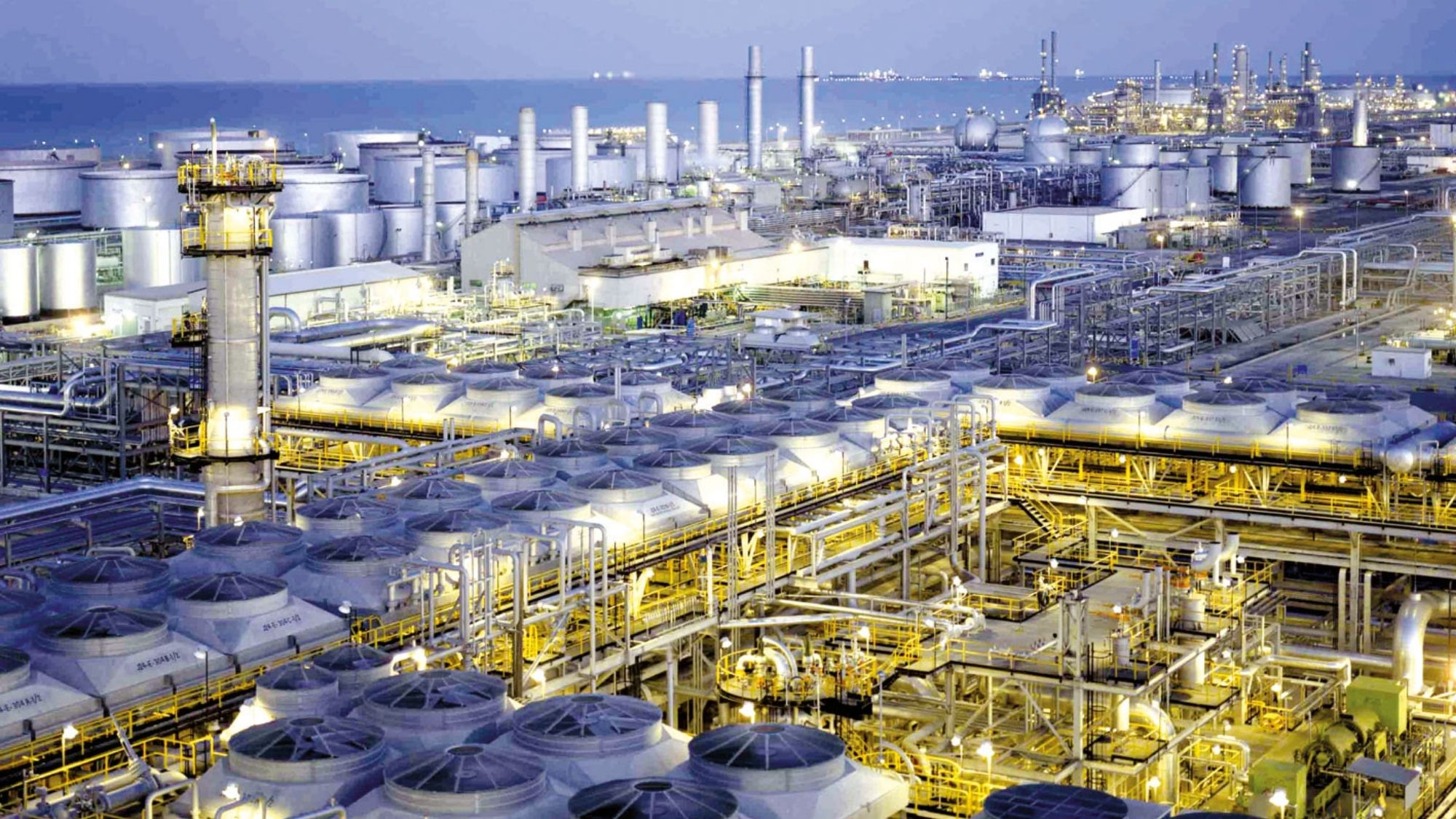ABU DHABI, UAE — Quarterly profits reported by GCC-listed companies showed a year-on-year (y-o-y) decline during Q2-2023, primarily due to falling energy and commodity prices.
A recent report by Kamco Invest indicates that most global commodity prices saw a decline during the quarter. This trend was mirrored by a roughly 15 percent slide in the Bloomberg Commodity Index since the previous year.
The retail and capital goods sectors also experienced a drop in profits, further contributing to the overall decline. Additionally, the utilities sector’s profits were impacted by increased financing costs, as stated by the sector’s two major players.
Conversely, the banking sector displayed resilience, with both quarter-on-quarter (q-o-q) and y-o-y profits seeing growth. This growth was attributed to continued lending, even in the face of rising interest rates. The telecom, real estate, and F&B sectors also reported higher y-o-y profits in Q2-2023.
The aggregate net profit for GCC-listed companies amounted to US$ 57.9 billion in Q2-2023, down from US$ 61.7 billion in Q1-2023, marking a q-o-q decline of 6.2 percent. The y-o-y performance was even more pronounced, showing a 26.6 percent drop compared to the Q2-2022 profits of US$ 78.8 billion, a record high for the GCC markets.
In terms of sectors, energy, materials, and capital goods saw the most significant absolute y-o-y profit declines compared to Q2-2022. These sectors represented 58 percent of total profits in Q2-2023, down from 73.8 percent in Q2-2022.
The report highlighted that the q-o-q performance decline was primarily due to reduced profits in the energy, capital goods, and real estate sectors. However, this was somewhat offset by increased profits in the utilities, F&B, and banking sectors.
Regionally, five out of six countries in the region reported a y-o-y profit decline. Saudi Arabia and Qatar experienced the most significant drops in Q2-2023, while growth in Dubai and Kuwait helped mitigate the overall decline. Profits for Saudi-listed companies reached their lowest in eight quarters.
The energy sector saw a sharp y-o-y profit decline of 37.0 percent or US$18.1 billion and a 14.5 percent q-o-q decline or US$5.2 billion in Q2-2023, settling at US$ 30.9 billion. This decline was due to both reduced volumes and price realizations.
During this period, average Brent crude oil prices fell by nearly a third to US$78.0 per barrel, down from US$ 113.8 per barrel in Q2-2022. Meanwhile, the broader Bloomberg Commodity Index reported a 20 percent y-o-y decline during Q2-2023, with the end-of-quarter index dropping by around 15 percent.
GCC markets at a glance * Aggregate net profit for GCC-listed companies in Q2-2023: US$ 57.9 billion. * Q-o-q decline from Q1-2023 to Q2-2023: 6.2%. * Y-o-y decline from Q2-2022 to Q2-2023: 26.6%. * Energy, materials, and capital goods sectors contributed to 58% of total profits in Q2-2023, down from 73.8% in Q2-2022. * Five out of six countries in the region reported a y-o-y profit decline. * Energy sector's y-o-y profit decline in Q2-2023: 37.0% or US$18.1 billion. * Q-o-q decline for the energy sector: 14.5% or US$5.2 billion. * Average Brent crude oil prices in Q2-2023: US$78.0 per barrel, down from US$ 113.8 per barrel in Q2-2022. * Saudi Aramco's y-o-y profit decline in Q2-2023: 37.3%. * Q-o-q decline for Saudi Aramco: 7.2%, totaling US$29.0 billion. * Net interest margin peak: 3.2%. * Total net income in Q2-2023: US$ 13.5 billion. * Q-o-q growth: 2.2%; y-o-y growth: 22.6%. * Reduction in loan loss provisions: from US$3.0 billion to US$ 2.7 billion. * Aggregate gross loans for GCC-listed banks at the end of Q2-2023: US$ 1.9 Trillion. * Q-o-q growth in loans: 1.9% or US$ 36.3 billion. * Aggregate net profits for Saudi Arabian listed companies in Q2-2023: US$ 38.6 billion, down from US$ 59.6 billion in Q2-2022. * Energy sector's profits in Q2-2023: US$ 28.9 billion, down from US$ 46.8 billion in Q2-2022. * Banking sector's net profit in Q2-2023: US$ 4.6 billion, up from US$4.0 billion in Q2-2022. * Telecom sector's net profit in Q2-2023: US$ 969.5 million. * Real Estate sector's net profit in Q2-2023: US$184.7 million. * Net profits for Dubai-listed companies in Q2-2023: US$ 5.0 billion, up from US$ 3.9 billion in Q2-2022. * Banking sector's total net profits in Dubai in Q2-2023: US$ 2.9 billion. * Transport sector's profits in Dubai in Q2-2023: US$ 208.3 million. * Companies listed in Abu Dhabi's total net profits in Q2-2023: US$ 8.0 billion. * Banking sector's total profit in Abu Dhabi in Q2-2023: US$ 2.3 billion. * Energy sector's profits in Abu Dhabi in Q2-2023: US$ 1.8 billion.
Within the energy sector, net profits for Saudi Aramco declined for the fourth consecutive quarter in Q2-2023, mirroring the continuous decline in crude oil prices. Profits for this oil giant fell by 37.3 percent y-o-y and 7.2 percent q-o-q, totaling US$29.0 billion. This decline was attributed to falling prices and slimmer margins in refining and chemicals.
In contrast, the GCC’s banking sector continued its growth trend, driven by increased net interest income and non-interest income.
Net interest income benefited from prolonged high interest rates in the GCC and globally, following the US Fed’s rate hikes to curb inflation. This trend was also evident in the net interest margin, which reached a multi-quarter peak of 3.2 percent.
Total net income amounted to US$ 13.5 billion, with a q-o-q growth of 2.2 percent and a y-o-y growth of 22.6 percent in Q2-2023. A reduction in loan loss provisions from US$3.0 billion to US$ 2.7 billion further bolstered the bottom line. These results were supported by increased aggregate outstanding credit facilities in nearly all GCC countries during the quarter, primarily due to a robust projects market pipeline and government initiatives to counteract the effects of high interest rates.
Aggregate gross loans for GCC-listed banks reached a record high of US$ 1.9 Trillion at the end of Q2-2023, with q-o-q growth of 1.9 percent or US$ 36.3 billion, supported by growth across all GCC markets.
Saudi Arabia
Aggregate net profits for Saudi Arabian listed companies saw a sharp decline of 35.3 percent, totaling US$ 38.6 billion in Q2-2023, down from US$ 59.6 billion in Q2-2022.
The banking and telecom sectors reported profitability growth during the quarter. However, the decline in Q2-2023 earnings was primarily due to a significant drop in the energy sector’s profits, which fell by 38.2 percent to US$ 28.9 billion, compared to US$ 46.8 billion in Q2-2022.
Profits in other key sectors, such as utilities and materials, also decreased. Aramco, the oil giant, reported a 37.3 percent decline in net profit during Q2-2023, mainly due to lower crude oil prices and reduced refining and chemicals margins.
In contrast, the banking sector outperformed other sectors, contributing the most to net profits during this period, with a net profit of US$ 4.6 billion in Q2-2023, up from US$4.0 billion in Q2-2022.
The Telecom sector’s net profit grew by 9.5 percent y-o-y to US$ 969.5 million in Q2-2023, compared to US$ 885.0 million in Q2-2022. The Real Estate sector followed with the third-largest total net profits, amounting to US$184.7 million in Q2-2023, a significant increase from US$38.4 million in Q2-2022.

Dubai
Net profits for Dubai-listed companies rose by 28.6 percent y-o-y to US$ 5.0 billion in Q2-2023, up from US$ 3.9 billion in Q2-2022. This earnings growth was primarily driven by banks, transportation, and telecom companies, which together accounted for 65 percent of the total earnings on the exchange during the quarter.
Notably, seven out of the twelve sectors on the Dubai Stock Exchange reported a y-o-y profit increase in Q2-2023. In contrast, the remaining five sectors, including insurance and consumer services, saw declines.
The banking sector’s total net profits increased by US$ 1.1 billion in Q2-2023, reaching US$ 2.9 billion, up from US$ 1.8 billion in Q2-2022. Aggregate profits for the transport sector grew by 26.7 percent y-o-y in Q2-2023, totaling US$ 208.3 million, up from US$ 164.3 million in Q2-2022.
Abu Dhabi
Companies listed in Abu Dhabi experienced a 3.4 percent y-o-y decline in total net profits during Q2-2023, amounting to US$ 8.0 billion, down from US$ 8.2 billion in Q2-2022.
The banking sector in Abu Dhabi saw a rise in net profits, with the sector’s total profit reaching US$ 2.3 billion, up from US$ 1.6 billion in Q2-2022, marking a y-o-y increase of US$ 643.9 million or 39.8 percent.
The energy sector reported the second-largest net profits on the exchange during Q2-2023, although there was a y-o-y profit decline of 18.3 percent, totaling US$ 1.8 billion, down from US$ 2.2 billion in Q2-2022.
Capital goods, materials, and retailing sectors were among those that reported profit declines during the quarter, contributing to the overall drop in the Abu Dhabi Exchange’s total profits. Conversely, the telecommunication services and food, beverage, and tobacco sectors saw profit increases during the quarter, helping to partially offset the declines from the aforementioned sectors.








